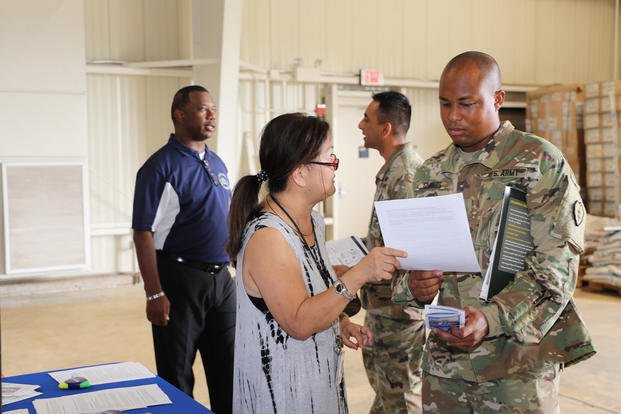The federal government recognizes the enormous contributions of men and women who have served their country in uniform. As a veteran of the armed services, you may have an advantage when seeking employment with the federal government. By law, disabled veterans or veterans who served on active duty during specified time periods or in military campaigns are entitled to preference over non-veterans, both in hiring and retention during reductions in the workforce.
To be entitled to preference, a veteran must have received an honorable or general discharge. Military retirees at or above the rank of major or equivalent are not entitled to preference unless they qualify as disabled veterans. Guard and Reserve active duty for training purposes does not qualify for preference.
There are three steps to the federal hiring process:
- Applicants must first submit a resume or other information requested in a federal vacancy announcement -- a document that describes the job opening and contains specific application instructions. Those instructions will also ask you to submit information about your military service, if any, to determine whether you are eligible for veterans' preference.
- Applicants are then evaluated based on their qualifications for the position and typically assigned a numerical score based on the information they have provided or based on an examination relevant to the job. Eligible veterans have either 5 or 10 points added to their scores.
- Depending on the process the hiring agency is using, applicants are typically considered through one of two methods:
- Applicants may be listed in numerical rank order based on their scores, and the selecting official may choose from the top three candidates, although a non-veteran may not be selected over a veteran with a higher ranking.
- The applicants are divided into two or three categories based on their scores, with "best qualified" being the highest category. A veteran must receive first consideration for hiring over any non-veterans in the same category. Qualified veterans with a compensable service-connected disability of 10% or more are automatically placed in the highest quality category.
Types of Preference
Five points are added to the score of veterans who served:
- Between Dec. 7, 1941, and July 1, 1955.
- For more than 180 consecutive days at any point between Jan. 31, 1955, and Oct. 15, 1976.
- During the Gulf War from Aug. 2, 1990, through Jan. 2, 1992.
- In a campaign or expedition for which a campaign medal has been authorized, including El Salvador, Grenada, Haiti, Lebanon, Panama, Somalia, Southwest Asia and Bosnia.
Ten points are added to the score of:
- Veterans who served any time and who have a disability connected to their military service or are receiving compensation, disability retirement benefits or pension from the military or Department of Veterans Affairs. Veterans who received a Purple Heart qualify as disabled veterans.
- Unmarried spouses of certain deceased veterans and spouses of veterans unable to work because of a service-connected disability.
- Mothers of veterans who died in service or who are permanently and totally disabled.
The Office of Personnel Management, the federal government's HR department, has additional information about veterans' preference in hiring for federal jobs.
Find the Right Veteran Job
Whether you want to polish your resume, find veteran job fairs in your area or connect with employers looking to hire veterans, Military.com can help. Subscribe to Military.com to have job postings, guides and advice, and more delivered directly to your inbox.











